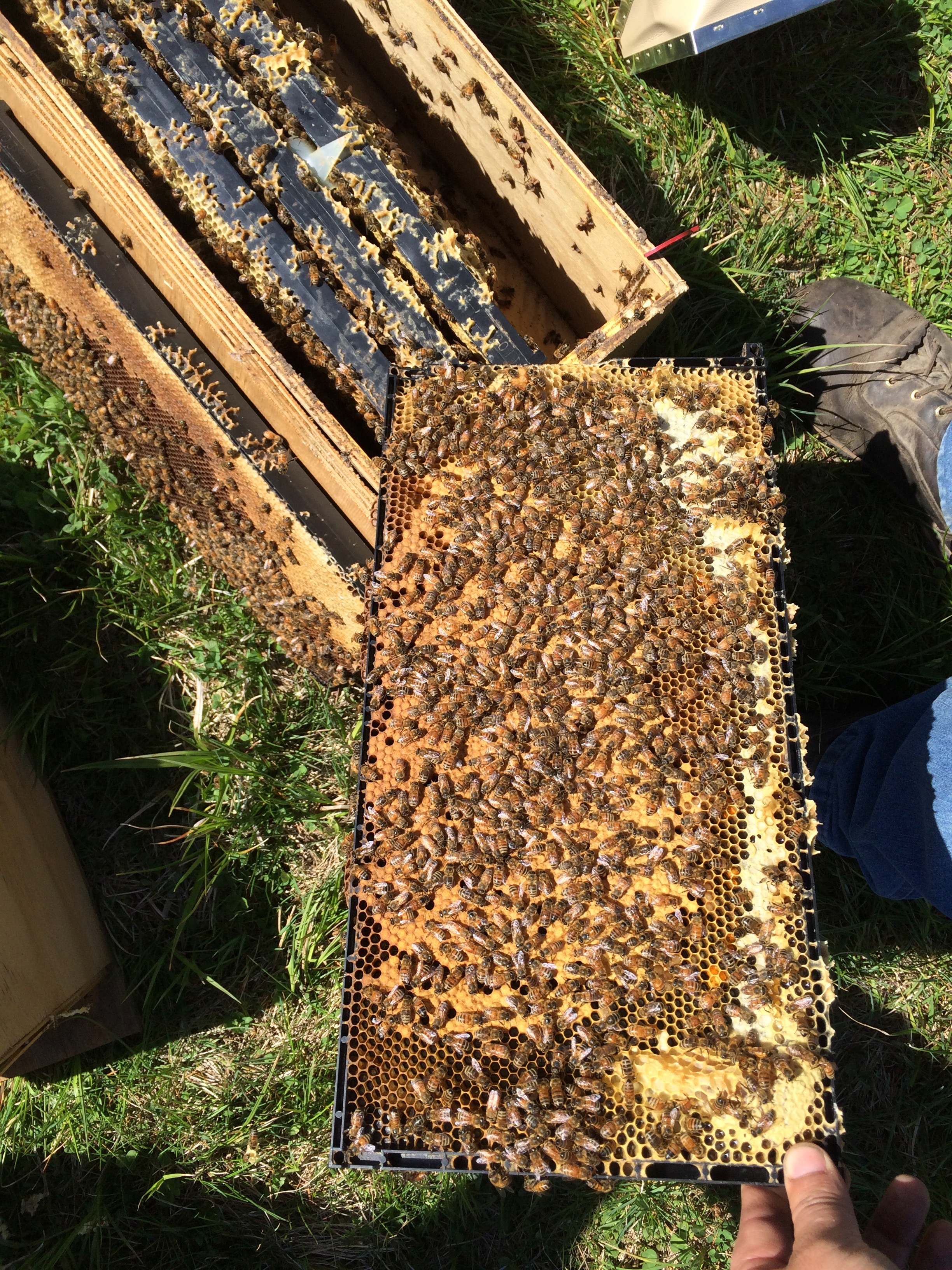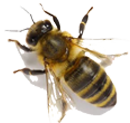Order Now
at theBfarm.com
Basic Beekeeping with Nucs:
There are several options for replacing or adding colonies into your apiary whether you have one or one-thousand hives. Packaged bees have always been a popular method for replacement or expansion. However, they sometimes pose supercedure issues due to the fact that you are combining a young mated queen with unrelated loose bees in an empty hive with pheromones (odors) unfamiliar to all. Often with new beekeepers, the bees are put into new equipment with undrawn combs. It is easier for bees to adapt to introduction onto comb that is already drawn and ready for the queen to lay eggs.
A five frame bee nucleus (NUC) consists of:
• A “laying” queen that has already been accepted by the hive
• 3 inner frames containing brood in all stages
• 2 outer frames containing honey, pollen, and adhering bees.

Good Bees Result from Good Stock!
In 2000 EHC through it’s sister company Merrimack Valley Apiaries Inc began to produce and sell large quantities of nucs for sale to sideline and hobby beekeepers in the northeast. Having experience in buying and installing large numbers of package bees, we knew about the limitations of package bees and were aware critical timing events associated with shaking packages and baby nuc set up for bred queen production.
The growing demand for package bees was evidenced by delivery times which stretched into mid and late June in many areas. Creating nucs is a natural extension of of raising bees for honey production or pollination. Our goal from the beginning was to produce a high quality product. We produce our nucs in wooden boxes with a full sized hive entrance so we maximize bee population without danger of overheating. We use a feeding system similar to what we use on our full sized hive, so each nuc receives the same amount of feed. We also provide our customers with the same VSH/OHIO QUEEN BREEDER stock that we use to produce over 50,000 queens for honey production and pollination each year.
For 2019 we expect to over 10,000 for sale nucs available making us one of the largest for sale nuc providers in the nation. New for 2019 is the 6 ftame nuc which offers the potential for splitting under certain conditions. And offers a faster growth curve than 5 framers after installation resulting in more honey production and stronger pollination hives!!
The Advantages of Nucs
• NUCs build up more rapidly than packages and do not suffer the sudden drop in population (dwindling) associated with the aging process in packages. The population of the package dies off without the advantage of having a stockpile of young bees hatching off and replenishing the population.
• Recent increases in package bee prices and postal rates have made NUC prices very close to the price of package bees.
• NUCs are not as delicate as packages and do not require the careful handling associated with package bees. We guarantee that your NUC will arrive alive.
• Our NUCs are less likely to supersede their queen. She is already a functioning part of the hive. She has produced the brood that is in the NUC. It is already a fully operational beehive, only smaller.
• NUCs can be installed later in the spring as weather conditions improve and more reliable nectar and pollen sources become available.
• NUCs do not require immediate installation relieving the urgency to immediately install in adverse weather conditions or at inopportune times as may be the case with package bees.
• Our NUCs are grown in Louisiana and can be picked up there, or at our two farms in the Northeast (MA and NY). While we are based in the northeast, with over 30,000 colonies, we were the first beekeepers to offer NUCs to beginners, hobbyists and commercial beekeepers alike as an alternative to packages. Remember, NUCs build up bee populations faster increasing your chances for a bigger honey crop!


Frequently Asked Questions
As a beginner, should I buy a package or a NUC?
How do I install my NUC?
What should I do for treatment for diseases?
The rules for treatment of Beehives have recently changed. We suggest you consult your local State Apiary Inspector.
How much honey will my bees produce?
What can I expect from my beekeeping experience?
A word about hive beetles - a pest?
Genetic diversity is an important factor in maintaining honey bee health and viability. Individual colonies that have good diversity among the bees in each hive are more productive, have increased colony growth, and are less susceptible to severe disease infections1,2.
Lack of genetic diversity (or inbreeding) can be devastating in honey bees, especially when diversity is low at the single site of the one gene where the gender of a bee is determined. Brood viability decreases when there is little genetic diversity among the drones with which a queen mates3.
- Mattila, H.R. & T.D. Seeley. 2007. Genetic diversity in honey bee colonies enhances productivity and fitness. Science 317: 362-364.
- Tarpey, D.R. 2003. Genetic diversity with honeybee colonies prevents severe infections and promotes colony growth. Proceedings of the Royal Society, London 270: 99-103.
- Mackenson, O. 1951. Viability and sex determination in the honey bees. Genetics 36: 500-509.

